-
 Bitcoin
Bitcoin $108,192.4840
-0.79% -
 Ethereum
Ethereum $2,520.0996
-1.16% -
 Tether USDt
Tether USDt $1.0002
-0.01% -
 XRP
XRP $2.2216
-0.44% -
 BNB
BNB $655.3498
-0.46% -
 Solana
Solana $148.0291
-1.58% -
 USDC
USDC $0.9999
0.00% -
 TRON
TRON $0.2831
-1.37% -
 Dogecoin
Dogecoin $0.1642
-1.68% -
 Cardano
Cardano $0.5748
-1.24% -
 Hyperliquid
Hyperliquid $39.4087
1.28% -
 Sui
Sui $2.9157
-0.36% -
 Bitcoin Cash
Bitcoin Cash $483.5621
0.38% -
 Chainlink
Chainlink $13.2143
-1.13% -
 UNUS SED LEO
UNUS SED LEO $9.0623
0.20% -
 Avalanche
Avalanche $17.8302
-1.40% -
 Stellar
Stellar $0.2374
-1.09% -
 Toncoin
Toncoin $2.7496
-2.20% -
 Shiba Inu
Shiba Inu $0.0...01147
-0.83% -
 Hedera
Hedera $0.1557
0.09% -
 Litecoin
Litecoin $86.3775
-1.75% -
 Monero
Monero $312.5454
-2.83% -
 Polkadot
Polkadot $3.3663
-2.25% -
 Dai
Dai $1.0000
0.01% -
 Ethena USDe
Ethena USDe $1.0001
0.00% -
 Bitget Token
Bitget Token $4.4127
-1.15% -
 Uniswap
Uniswap $6.9598
-5.53% -
 Pepe
Pepe $0.0...09815
0.25% -
 Aave
Aave $270.5779
0.33% -
 Pi
Pi $0.4678
-3.14%
Does Coinomi Wallet support staking?
Coinomi Wallet supports staking for select cryptocurrencies like Cosmos, Tezos, and Algorand, but not all supported coins can be staked through the wallet.
Apr 11, 2025 at 09:28 pm

Introduction to Coinomi Wallet
Coinomi Wallet is a popular multi-currency cryptocurrency wallet that supports over 125 blockchains and thousands of tokens. It is known for its strong focus on security, privacy, and user control. One of the key features users often inquire about is whether Coinomi Wallet supports staking. In this article, we will explore the staking capabilities of Coinomi Wallet in detail.
What is Staking?
Staking is the process of holding funds in a cryptocurrency wallet to support the operations of a blockchain network. By staking, users can earn rewards, similar to earning interest in a traditional bank account. Staking is commonly used in Proof of Stake (PoS) and Delegated Proof of Stake (DPoS) blockchains, where validators are chosen to create new blocks based on the number of coins they hold and are willing to "stake" as collateral.
Coinomi Wallet's Staking Support
Coinomi Wallet does support staking, but the extent of this support varies depending on the specific cryptocurrency. Not all cryptocurrencies supported by Coinomi can be staked through the wallet. The wallet primarily supports staking for a select number of cryptocurrencies that use the PoS consensus mechanism.
How to Stake in Coinomi Wallet
To stake in Coinomi Wallet, you need to follow a few steps. Here is a detailed guide on how to stake using Coinomi:
- Open Coinomi Wallet: Launch the Coinomi Wallet app on your mobile device or access the desktop version.
- Select the Cryptocurrency: Navigate to the specific cryptocurrency you wish to stake. Ensure that the cryptocurrency supports staking within Coinomi.
- Check Staking Eligibility: Verify that your wallet balance meets the minimum staking requirements for the chosen cryptocurrency.
- Enable Staking: Go to the settings or options menu for the selected cryptocurrency and look for a staking or delegation option. Enable staking according to the on-screen instructions.
- Confirm Staking: Confirm the staking action, and your coins will be locked for staking. You will start earning rewards based on the staking rules of the cryptocurrency.
Supported Cryptocurrencies for Staking in Coinomi
Coinomi Wallet supports staking for several cryptocurrencies. Some of the notable ones include:
- Cosmos (ATOM): Users can stake ATOM directly within Coinomi to participate in the Cosmos network and earn rewards.
- Tezos (XTZ): Coinomi allows users to delegate their XTZ to a baker and earn baking rewards.
- Algorand (ALGO): ALGO holders can stake their tokens in Coinomi to support the Algorand network and receive staking rewards.
Limitations and Considerations
While Coinomi Wallet does offer staking capabilities, there are certain limitations and considerations users should be aware of:
- Limited Staking Options: Coinomi supports staking for only a limited number of cryptocurrencies. If you are interested in staking a cryptocurrency not listed in Coinomi's supported list, you will need to use a different wallet or platform.
- No Control Over Validators: For some cryptocurrencies, Coinomi does not allow users to choose specific validators or nodes to stake with. Instead, the wallet automatically delegates to a pre-selected validator.
- Rewards and Fees: The staking rewards and any associated fees can vary depending on the cryptocurrency and the network's current conditions. Users should research the expected rewards and potential fees before staking.
Security and Privacy in Coinomi Staking
Coinomi Wallet places a strong emphasis on security and privacy, which extends to its staking features. The wallet uses a hierarchical deterministic (HD) architecture to generate new addresses for each transaction, enhancing user privacy. Additionally, Coinomi does not require users to undergo Know Your Customer (KYC) procedures, further protecting user anonymity.
When staking, it is crucial to ensure that your private keys remain secure. Coinomi Wallet stores private keys locally on the user's device, and it does not have access to them. This means that users have full control over their funds and staking activities.
User Experience and Interface
The user interface of Coinomi Wallet is designed to be user-friendly, making it relatively easy to navigate and manage staking activities. The wallet provides clear instructions and options for enabling staking, and the process is streamlined to minimize user effort.
However, users new to staking may find the process somewhat complex, especially if they are not familiar with the specific requirements of the cryptocurrency they wish to stake. Coinomi's support resources, including FAQs and guides, can be helpful in navigating these complexities.
Frequently Asked Questions
Q: Can I stake any cryptocurrency in Coinomi Wallet?
A: No, Coinomi Wallet supports staking for only a limited number of cryptocurrencies. You should check the wallet's supported list to see if the cryptocurrency you are interested in staking is included.
Q: How do I know if my staked coins are earning rewards?
A: You can monitor your staking rewards within the Coinomi Wallet app. Navigate to the specific cryptocurrency you are staking, and the wallet will display your current staking rewards and any pending rewards.
Q: Is it safe to stake in Coinomi Wallet?
A: Staking in Coinomi Wallet is generally safe, as the wallet prioritizes security and privacy. However, users must ensure they keep their private keys secure and follow best practices for wallet security.
Q: Can I unstake my coins at any time?
A: The ability to unstake your coins depends on the specific cryptocurrency and its staking rules. Some cryptocurrencies may have a lock-up period during which you cannot unstake your coins. Always check the staking rules of the cryptocurrency you are interested in before staking.
Disclaimer:info@kdj.com
The information provided is not trading advice. kdj.com does not assume any responsibility for any investments made based on the information provided in this article. Cryptocurrencies are highly volatile and it is highly recommended that you invest with caution after thorough research!
If you believe that the content used on this website infringes your copyright, please contact us immediately (info@kdj.com) and we will delete it promptly.
- Bitcoin, Ripple, and TPS: A New Sheriff in Town?
- 2025-07-05 19:16:07
- Bitcoin Investment: Will You 10x by 2030?
- 2025-07-05 19:16:07
- BONK on Solana: Meme Coin Mania or the Real Deal?
- 2025-07-05 19:16:08
- PEPE Coin, Neo Pepe, and Market Makers: Decoding the Latest Crypto Moves
- 2025-07-05 19:16:08
- BONK Price Rockets: ETF Buzz Sparks Rally and Breakout!
- 2025-07-05 19:16:10
- BONK Price Rockets: Rally, Breakout, and What's Next for the Meme Coin
- 2025-07-05 19:16:10
Related knowledge
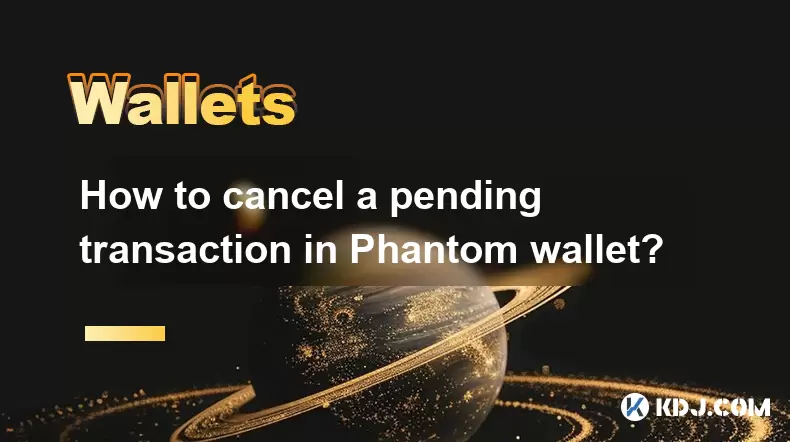
How to cancel a pending transaction in Phantom wallet?
Jul 03,2025 at 07:21pm
Understanding Pending Transactions in Phantom WalletA pending transaction in the Phantom wallet occurs when a user initiates a transfer or interaction with the Solana blockchain, but it hasn't yet been confirmed by the network. This can happen due to various reasons such as low transaction fees, network congestion, or incorrect gas settings. It's import...
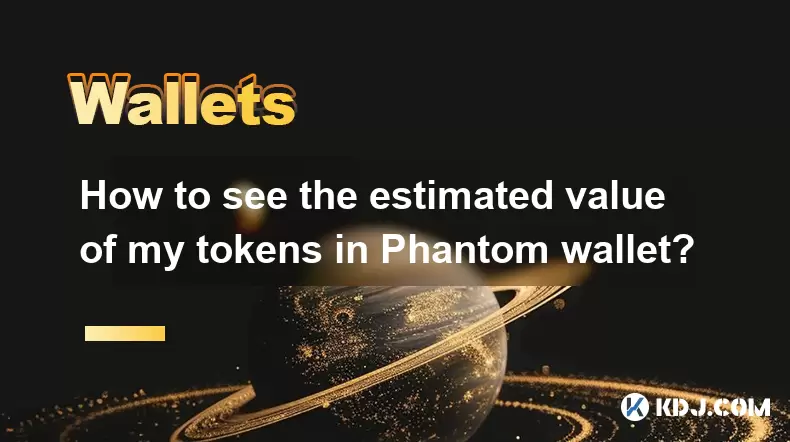
How to see the estimated value of my tokens in Phantom wallet?
Jul 04,2025 at 12:21am
What is Phantom Wallet?Phantom wallet is one of the most popular cryptocurrency wallets designed for the Solana blockchain. It allows users to store, send, receive, and manage various tokens built on Solana, including SPL tokens and NFTs. The wallet offers a user-friendly interface, making it accessible for both beginners and advanced users in the crypt...
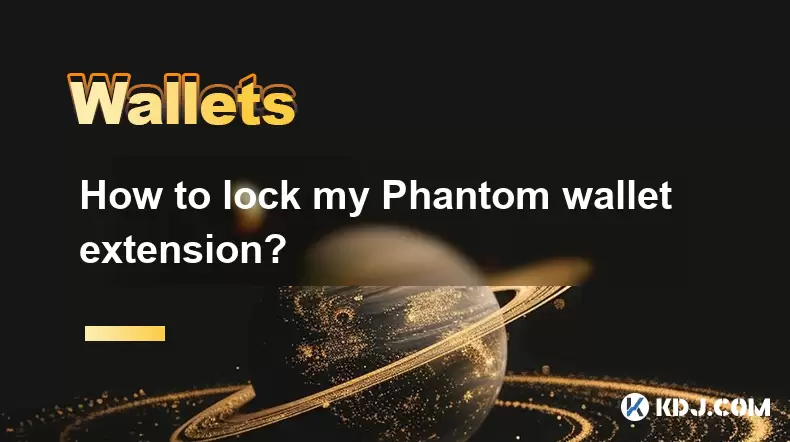
How to lock my Phantom wallet extension?
Jul 03,2025 at 11:14am
What Is the Phantom Wallet and Why Lock It?The Phantom wallet is a popular non-custodial cryptocurrency wallet designed for interacting with the Solana blockchain. Supporting both browser extensions and mobile apps, Phantom allows users to store, send, receive, and stake SOL tokens, as well as interact with decentralized applications (dApps). Securing y...

Does Phantom wallet offer two-factor authentication (2FA)?
Jul 03,2025 at 09:00am
Understanding Phantom Wallet and Its Security FeaturesPhantom wallet is a widely used non-custodial cryptocurrency wallet that supports the Solana blockchain. It allows users to store, send, receive, and interact with decentralized applications (dApps) seamlessly. As security is a top priority for any crypto wallet user, security features like two-facto...
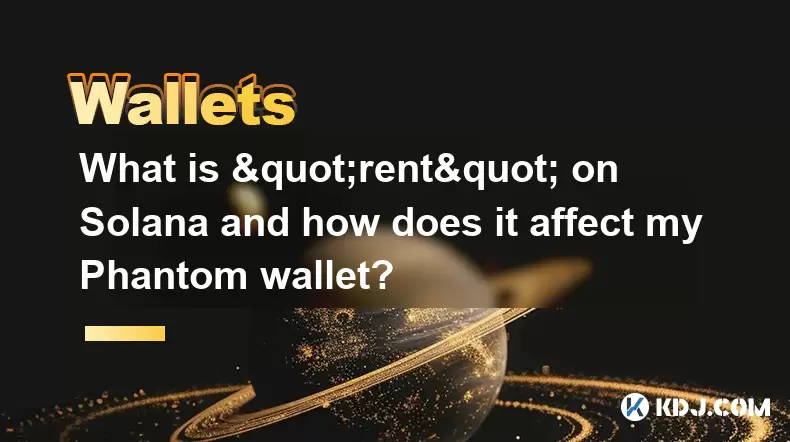
What is "rent" on Solana and how does it affect my Phantom wallet?
Jul 02,2025 at 08:35pm
Understanding 'Rent' on SolanaIn the context of Solana, the term 'rent' refers to a storage fee that users pay for maintaining data on the blockchain. Unlike Ethereum, where storage costs are paid once via gas fees during contract deployment, Solana implements a recurring cost model to ensure efficient usage of network resources. This means that any acc...
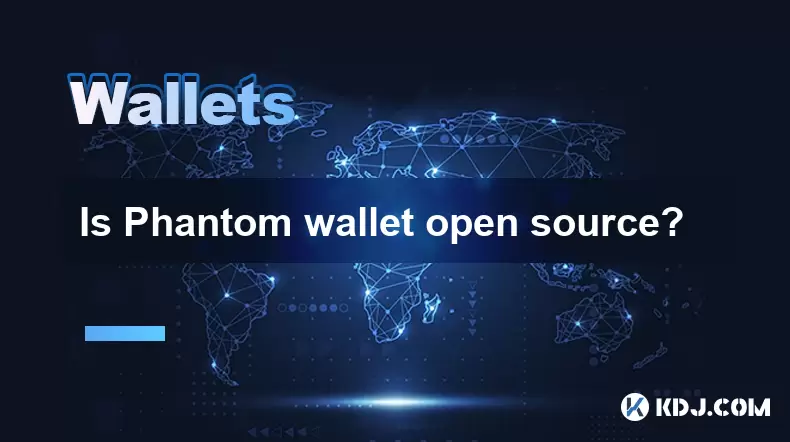
Is Phantom wallet open source?
Jul 03,2025 at 12:29am
What is Phantom Wallet?Phantom wallet is a non-custodial cryptocurrency wallet primarily designed for the Solana blockchain. It allows users to store, send, receive, and interact with decentralized applications (dApps) on the Solana network. The wallet is available as a browser extension and mobile application, offering a seamless experience for both be...

How to cancel a pending transaction in Phantom wallet?
Jul 03,2025 at 07:21pm
Understanding Pending Transactions in Phantom WalletA pending transaction in the Phantom wallet occurs when a user initiates a transfer or interaction with the Solana blockchain, but it hasn't yet been confirmed by the network. This can happen due to various reasons such as low transaction fees, network congestion, or incorrect gas settings. It's import...

How to see the estimated value of my tokens in Phantom wallet?
Jul 04,2025 at 12:21am
What is Phantom Wallet?Phantom wallet is one of the most popular cryptocurrency wallets designed for the Solana blockchain. It allows users to store, send, receive, and manage various tokens built on Solana, including SPL tokens and NFTs. The wallet offers a user-friendly interface, making it accessible for both beginners and advanced users in the crypt...

How to lock my Phantom wallet extension?
Jul 03,2025 at 11:14am
What Is the Phantom Wallet and Why Lock It?The Phantom wallet is a popular non-custodial cryptocurrency wallet designed for interacting with the Solana blockchain. Supporting both browser extensions and mobile apps, Phantom allows users to store, send, receive, and stake SOL tokens, as well as interact with decentralized applications (dApps). Securing y...

Does Phantom wallet offer two-factor authentication (2FA)?
Jul 03,2025 at 09:00am
Understanding Phantom Wallet and Its Security FeaturesPhantom wallet is a widely used non-custodial cryptocurrency wallet that supports the Solana blockchain. It allows users to store, send, receive, and interact with decentralized applications (dApps) seamlessly. As security is a top priority for any crypto wallet user, security features like two-facto...

What is "rent" on Solana and how does it affect my Phantom wallet?
Jul 02,2025 at 08:35pm
Understanding 'Rent' on SolanaIn the context of Solana, the term 'rent' refers to a storage fee that users pay for maintaining data on the blockchain. Unlike Ethereum, where storage costs are paid once via gas fees during contract deployment, Solana implements a recurring cost model to ensure efficient usage of network resources. This means that any acc...

Is Phantom wallet open source?
Jul 03,2025 at 12:29am
What is Phantom Wallet?Phantom wallet is a non-custodial cryptocurrency wallet primarily designed for the Solana blockchain. It allows users to store, send, receive, and interact with decentralized applications (dApps) on the Solana network. The wallet is available as a browser extension and mobile application, offering a seamless experience for both be...
See all articles

























































































